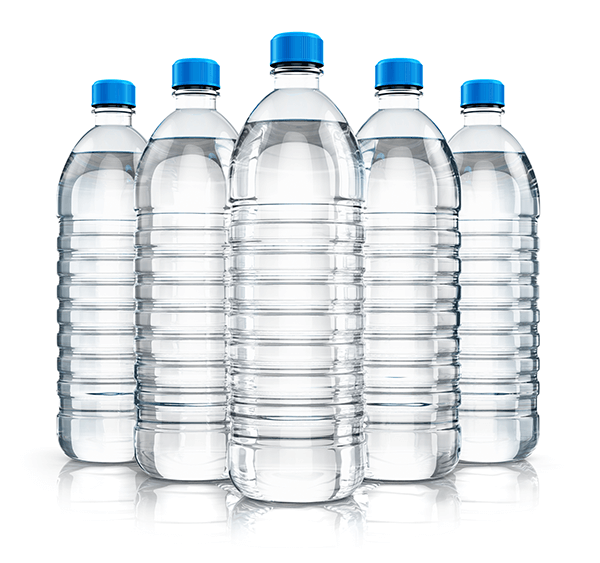Updated September 2019
It sometimes seems not a day goes by without another article on the internet announcing 5, 7 or even more reasons not to drink out of plastic water bottles. That recommendation could only make sense if the reasons are valid, and this is where the articles come up dry.
With the three reasons below, you can safely ignore the 5, 7, or more reasons in so many other articles and continue to drink out of plastic bottles to your heart’s content.
1. Plastic water (and soda) bottles do not contain BPA
The most common reason used to suggest avoiding plastic water bottles is that the bottles contain bisphenol A (BPA). The articles usually show a picture of a plastic water bottle.

That might be a reason to avoid plastic water bottles if you were concerned about BPA and the bottles actually contained BPA. But, they don’t now and never did. Essentially all plastic water (and soda) bottles are made from a plastic known as PET. The full name is polyethylene terephthalate, which is probably why everyone calls it PET.
PET is not made from BPA and does not contain any BPA. For that matter, it doesn’t contain similar chemicals such as bisphenol S (BPS), which is also frequently cited as a reason not to drink out of plastic bottles.
If you want to be sure, look on the bottom of a bottle for the “resin identification code,” which is often in the form of a triangle with the number 1 inside. The number 1 indicates PET, which is usually also spelled out below the triangle.
2. BPA is safe in contact with food and beverages
The most common uses for BPA are to make polycarbonate plastic and epoxy resins. Both materials are widely used in products that help to make our lives better and safer every day.
We know from extensive scientific research and government review that exposure to trace amounts of BPA is safe. Getting right to the point on its website, FDA asks and succinctly answers the key question on the safety of BPA.
Although FDA’s perspective on the safety of BPA might be the most direct and to the point, many government bodies around the world share that same perspective. Regardless of where you are in the world, you can be sure you are safe from BPA.
3. Plastics used in food and beverage products are safe for use
All plastics used in products that contact food or beverages are regulated by FDA to be sure they are safe for their intended use. That includes food storage containers and food packaging, as well as the PET plastic used in water bottles.
The FDA regulations are strictly based on safety considerations and plastics that do not meet FDA safety requirements are not permitted in food-contact products. Similar regulatory systems exist in all major countries around the world.
So there you have it. You can safely drink out of plastic water bottles, but there are a couple of additional things you should know.
Although plastic water bottles do not contain BPA, they may contain potentially harmful bacteria after they are used. It’s okay to reuse plastic water bottles, but make sure you clean the bottles with soap and hot water after use, the same as you would clean cups and dinnerware after a meal.
And when you’re done with the bottle, don’t forget to toss it in the recycle bin – and include the plastic cap. PET bottles are almost universally collected for recycling. That bottle’s got another life to live if you remember to recycle.
If you’re interested in learning even more about how BPA plays a part in everyday items, check out our resources page.
Additionally, our latest blog post discusses the results of the CLARITY Core Study, the largest study ever done on BPA safety.
